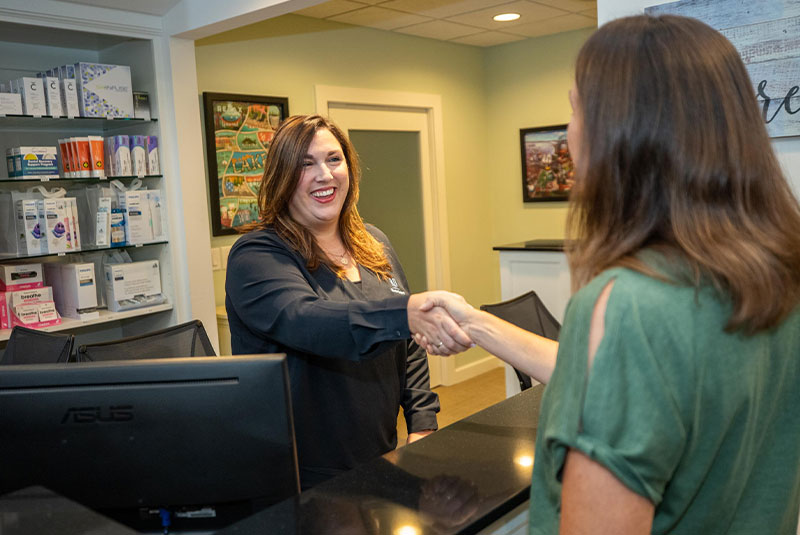
Early Detection for Oral Cancer
A common prevention tactic for all cancers is a cancer screening. The earlier a test can catch cancer, the better the chances for successful treatment. This is especially true for oral cancers, which often sneak up on people. Oral cancer screenings should happen once a year from the age of 18 on to catch any potential cancers. Both the dentist and the hygienist will do an oral cancer screening at every appointment.
It is also good practice to “self monitor” for oral cancer. In other words, if you notice a sore or a lesion in or around your mouth, you don’t know why it’s there, and it’s been there for longer than two weeks, you should have a dentist or doctor take a look.
So, what should you expect at a screening? Screenings examine the face, neck, lips, and nose as well as the mouth. Symptoms can appear in any of these places.
Oral cancer symptoms include sores on the lip or in the mouth, swelling of the face and neck, and bumps or lumps on the face or tongue. Even earaches and hoarseness can be signs of mouth cancer. With so many possible symptoms, it’s important to pay attention to changes in your body, especially painless ones that are often ignored.
While tobacco users and heavy drinkers are at a higher risk of oral cancer, nonsmokers should take just as much care. Research supports that a new source of oral cancers is the HPV16 virus, which has been steadily rising and affecting people still in their 20s and 30s.
Remember, if your dentist or doctor does an oral cancer screening, it does not mean your doctor thinks you have cancer. Screening is an oral cancer prevention tool. If anything unusual turns up in a screening, then further tests are needed.
At RD, we are fully equipped to perform screenings for you! If you would like to learn more about screening techniques, symptoms, and treatments, please visit the Oral Cancer Foundation website for resources.

Is it time for an oral cancer screening? Schedule your evaluation today.
Schedule your evaluation today.

